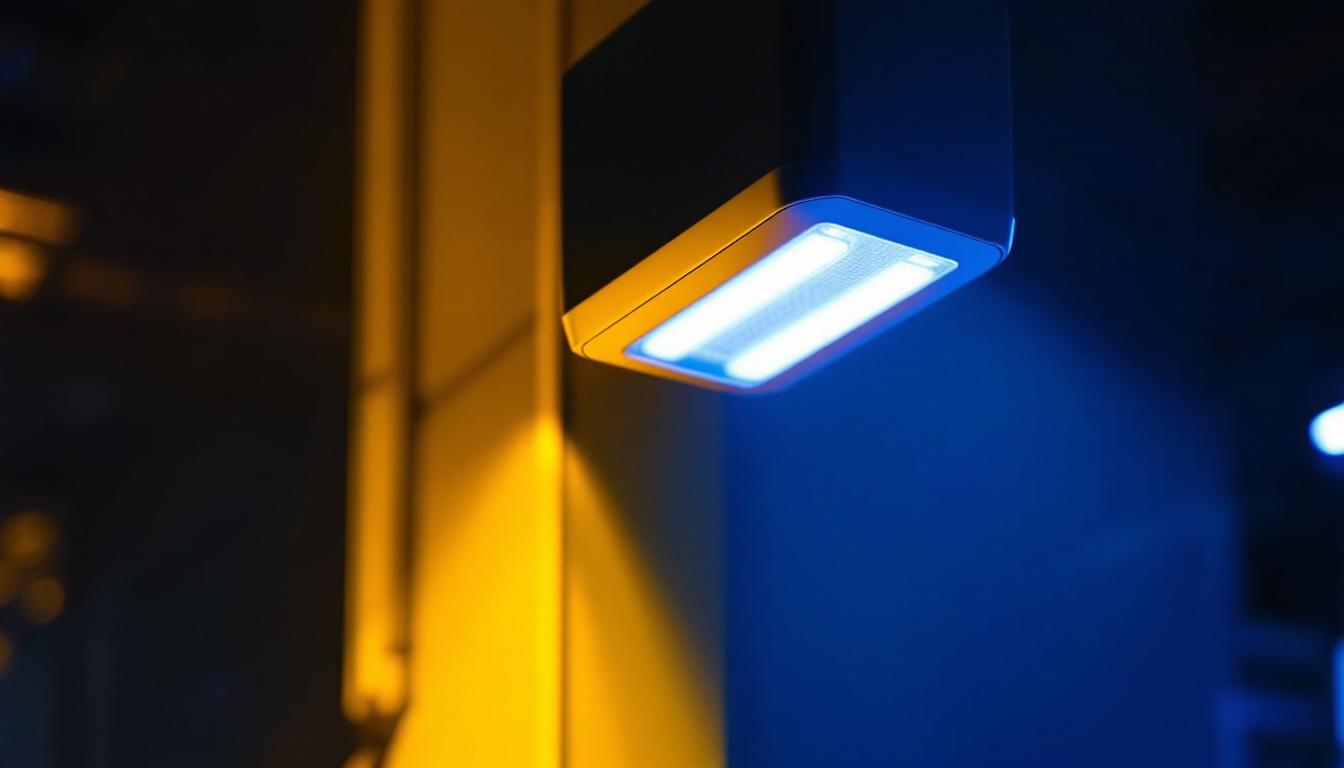
In the ever-evolving landscape of lighting technology, battery emergency lighting systems are gaining traction among contractors and building managers alike. These systems not only enhance safety but also comply with stringent regulations. As a lighting contractor, staying informed about the latest trends in battery emergency lighting can set you apart in a competitive market. This article explores the current trends and innovations that every lighting contractor should be aware of.
Battery emergency lighting systems are designed to provide illumination during power outages or emergencies. These systems typically consist of LED fixtures equipped with battery backup, ensuring that they remain operational even when the main power supply fails. Understanding the core components and functionality of these systems is crucial for lighting contractors. In addition to providing essential lighting, these systems can also enhance safety by guiding occupants to exits and preventing accidents during critical situations.
A typical battery emergency lighting system includes several key components: the light fixture, the battery, and the charging system. The light fixture is often an energy-efficient LED model, which provides bright illumination while consuming minimal power. The battery serves as the backup power source, usually utilizing lithium-ion or nickel-cadmium technology for reliability and longevity. Finally, the charging system is responsible for maintaining the battery’s charge, ensuring it is ready for use when needed. Additionally, many modern systems incorporate smart technology, allowing for real-time monitoring of battery health and performance, which can alert facility managers to any issues before they become critical.
Compliance with local and national safety regulations is paramount for battery emergency lighting systems. Contractors must be aware of the relevant codes, such as the National Fire Protection Association (NFPA) and the International Building Code (IBC), which outline the requirements for emergency lighting. Understanding these regulations not only ensures safety but also protects contractors from potential liabilities. Furthermore, regular testing and maintenance of these systems are often mandated by law, requiring contractors to establish a routine inspection schedule to verify that all components are functioning correctly. This proactive approach not only meets regulatory standards but also fosters trust and reliability within the communities they serve.
When installing battery emergency lighting systems, several factors must be taken into account to ensure optimal performance. The placement of fixtures is critical; they should be strategically located in areas where visibility is essential, such as hallways, stairwells, and near exits. Additionally, the design of the lighting system should consider the specific layout of the building, including any obstructions that could impede light distribution. It’s also important to evaluate the expected duration of power outages in the area, as this will influence the choice of battery capacity and overall system design. By carefully assessing these elements, contractors can create a comprehensive emergency lighting plan that not only meets legal requirements but also enhances the safety and comfort of building occupants during emergencies.
As technology progresses, so do the capabilities of battery emergency lighting systems. Innovations in battery technology, control systems, and integration with smart building solutions are reshaping the landscape. Contractors must stay abreast of these advancements to offer the best solutions to their clients.
Smart emergency lighting systems are becoming increasingly popular, integrating with building management systems (BMS) to provide real-time monitoring and control. These systems can send alerts regarding battery status, light output, and maintenance needs, allowing for proactive management. For contractors, this means offering clients enhanced safety and efficiency while reducing long-term maintenance costs. Furthermore, these smart systems can be programmed to adapt to various emergency scenarios, ensuring that lighting is optimized for visibility and safety during different types of incidents, whether it be a fire, power outage, or other emergencies. The ability to remotely access and control these systems also empowers building managers to make informed decisions quickly, enhancing overall emergency preparedness.
Battery technology has seen significant advancements, particularly with the introduction of lithium-ion batteries. These batteries offer a higher energy density, longer lifespan, and faster charging times compared to traditional nickel-cadmium batteries. As a contractor, recommending lithium-ion systems can lead to improved performance and lower total cost of ownership for clients. In addition to lithium-ion, other emerging technologies such as solid-state batteries are on the horizon, promising even greater safety and efficiency. Solid-state batteries eliminate the flammable liquid electrolyte found in conventional batteries, significantly reducing the risk of fire and improving overall reliability. This evolution in battery technology not only enhances the performance of emergency lighting systems but also aligns with the growing demand for sustainable and eco-friendly solutions in building design.
Design plays a crucial role in the effectiveness of emergency lighting. Aesthetically pleasing and strategically placed fixtures can enhance visibility and safety without compromising the building’s overall design. Understanding current design trends can help contractors create solutions that meet both functional and aesthetic needs.
Modern emergency lighting solutions are increasingly being integrated with architectural elements. This trend involves designing fixtures that blend seamlessly with the building’s interior and exterior. Contractors are now tasked with selecting fixtures that not only provide adequate lighting but also complement the overall design aesthetic.
Minimalist designs are gaining popularity in emergency lighting. Sleek, unobtrusive fixtures can provide essential lighting without detracting from the architectural beauty of a space. Lighting contractors should consider options that maintain a low profile while still delivering the necessary illumination during emergencies.
With a growing emphasis on sustainability, energy-efficient emergency lighting solutions are becoming a priority for many contractors. The shift towards environmentally friendly products not only helps reduce energy consumption but also appeals to clients who prioritize sustainability in their projects.
LED technology has revolutionized emergency lighting, offering significant energy savings compared to traditional incandescent or fluorescent fixtures. By utilizing LED lights, contractors can provide clients with solutions that reduce energy costs and have a longer lifespan, ultimately leading to lower maintenance expenses.
Another trend in sustainability is the use of recyclable materials in the manufacturing of emergency lighting fixtures. Contractors should seek out products made from materials that can be easily recycled at the end of their lifecycle. This not only aligns with sustainability goals but also enhances the marketability of the projects.
Understanding market demand and client expectations is crucial for lighting contractors. As awareness of safety and energy efficiency grows, clients are increasingly seeking advanced emergency lighting solutions. Staying attuned to these expectations can help contractors tailor their offerings effectively.
As safety regulations become more stringent, clients are becoming more informed about the importance of compliance. Contractors must be prepared to educate clients on the benefits of battery emergency lighting systems and how they can enhance safety in their buildings. Providing detailed information about compliance can build trust and lead to more successful projects.
Clients are increasingly looking for customized solutions that meet their specific needs. This trend emphasizes the importance of flexibility in design and installation. Contractors who can offer tailored solutions, such as adjustable light levels or modular systems, will likely find greater success in meeting client expectations.
Proper installation of battery emergency lighting systems is vital for ensuring optimal performance and compliance with regulations. Contractors should adhere to best practices to guarantee that systems function effectively during emergencies.
Strategic placement of emergency lighting fixtures is essential for maximizing visibility during power outages. Contractors should conduct thorough assessments of the building layout to identify key areas that require illumination, such as exits, stairwells, and hallways. Ensuring that fixtures are installed at appropriate heights and angles can significantly enhance their effectiveness.
Regular testing and maintenance of battery emergency lighting systems are crucial for ensuring reliability. Contractors should establish a routine maintenance schedule that includes testing the batteries, checking the functionality of the fixtures, and replacing any components as needed. This proactive approach not only ensures compliance with regulations but also enhances the safety of building occupants.
The future of battery emergency lighting appears promising, with continued advancements in technology and a growing emphasis on safety and sustainability. As a lighting contractor, being proactive in adopting these trends can lead to new opportunities and greater client satisfaction.
The integration of Internet of Things (IoT) technology into emergency lighting systems is on the horizon. This development will enable contractors to offer clients systems that can be monitored and controlled remotely, providing real-time data on performance and maintenance needs. As smart technologies become more prevalent, contractors should consider how these innovations can enhance their service offerings.
As climate-related challenges become more prominent, the focus on resilience and adaptability in building design will grow. Battery emergency lighting systems that can withstand extreme conditions and provide reliable performance will be in high demand. Contractors should stay informed about the latest materials and technologies that enhance the resilience of emergency lighting systems.
Battery emergency lighting is a crucial component of modern building safety, and staying informed about the latest trends is essential for lighting contractors. By understanding the components, emerging technologies, design trends, and client expectations, contractors can offer solutions that not only meet regulatory requirements but also enhance the overall safety and efficiency of buildings. As the market continues to evolve, embracing these trends will position contractors for success in the competitive lighting industry.
Ready to stay ahead of the curve with the latest in battery emergency lighting? LumenWholesale is your go-to source for spec-grade lighting products that meet the highest industry standards. We provide contractors with the most reliable and high-performance lighting solutions at unbeatable wholesale prices. Say goodbye to inflated markups and hello to premium lighting with the convenience of free shipping. Elevate the safety and efficiency of your projects while enjoying the best value in the market. Wholesale Lighting at the Best Value is just a click away. Partner with LumenWholesale today and light up your projects with confidence.

Discover the essential guide to recessed lighting clips tailored for lighting contractors.

Discover how string outdoor LED lights are revolutionizing energy efficiency in modern landscapes.

Discover the latest trends in ceiling fan parts that every lighting contractor needs to know.

Illuminate your outdoor spaces with style and efficiency using expert advice from lighting contractors.